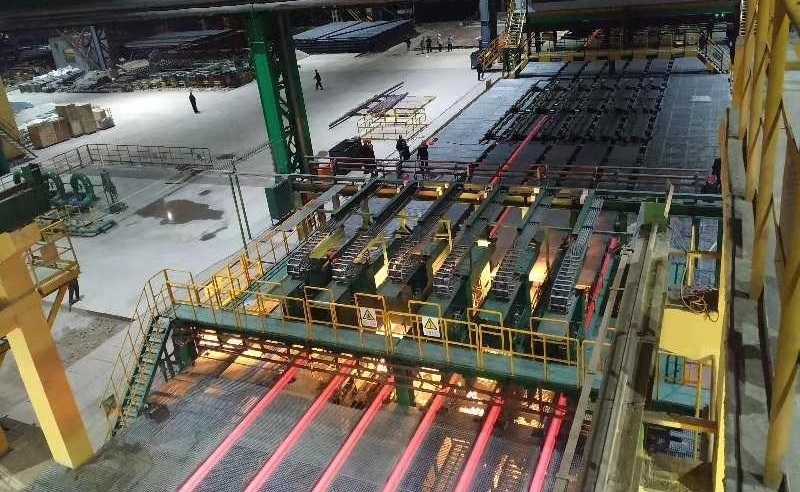Industry News
Advantages and Disadvantages of Direct Rolling without Heating
Author : Hani Time : 2020/03/19
Direct rolling without heating has the following advantages:
1. It can make full use of thermal energy of continuous casting metallurgy, reduce energy consumption and play the role of energy conservation and emission reduction;
2. Reduce the investment of heating furnace equipment, refractory, workshop and production personnel;
3. It is to reduce the burning loss of iron oxide scale, improve the yield, shorten the production cycle, and reduce the investment of billet stacking plant and transportation equipment;
4. The low outside and high inside temperature of billet section is favorable for rolling. In terms of indicators, direct rolling without heating can achieve "six zeros, one increase and one decrease", i.e. zero carbon dioxide emission, zero soot emission, zero sulfur dioxide emission, zero nitrogen oxide emission, zero heating oxidation burning loss and zero heating fuel consumption, not only improving product performance, but also reducing production cost by 50 yuan / ton to 150 yuan / ton.
1. The continuous casting slab is not heated or supplemented with heat, and there is a serious problem of uneven temperature distribution in the length direction. The yield strength performance of the head and tail of bar is up to 40MPa, which is qualified in spot check and unqualified in site check. Therefore, the performance of the head and tail of the same billet should be uniform to improve the stability of product quality.
2. Before rolling, the billet does not go through the recrystallization process of γ - α - γ transformation, but still retains the coarse austenite grains. The Trace Elements Nb, V and so on do not have the precipitation and re dissolution process of the conventional cold charging furnace. Therefore, it is necessary to develop a new rolling process to obtain the grain refinement structure.
3. There is no buffering and coordinating function of heating furnace, steel-making and rolling are rigidly connected, production rhythm is not matched, production affects each other, and cold slab is inevitable. Therefore, new flexible connection process should be developed.
4. The temperature of 850 ℃ or even 820 ℃ often appears in the billet when the rod and wire are directly rolled without heating or supplementary heating. If the temperature is not rolled, it will not be conducive to improving the direct rolling rate. When these billets are rolled, the rolling load of the rolling mill is high, so the strength and load of the process equipment must meet the requirements.
5. When the billet temperature is too low, it cannot be rolled directly. Before the continuous casting slab is sent to the rolling mill in general workshop, the billet transfer cycle is more than 300 seconds, and the temperature of the slab has been reduced to 700 ℃ ~ 800 ℃. In order to reduce the temperature drop in the process of billet transportation, the speed of billet transportation should be increased.

TAG: continuous casting heating furnace direct rolling steel making rolling process rolling mill


